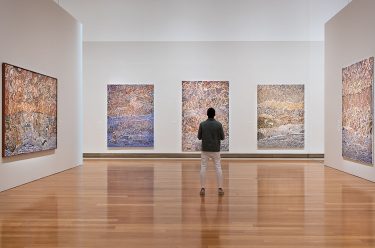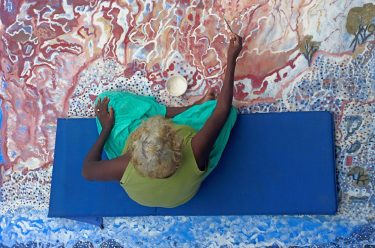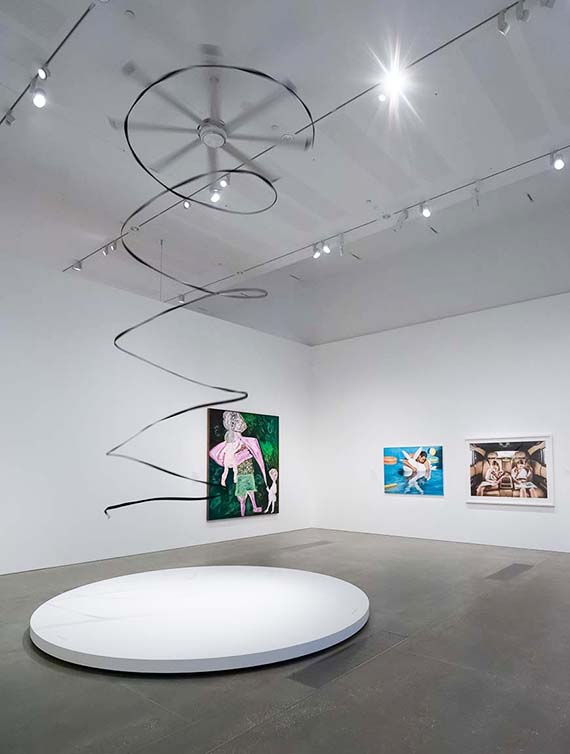
In conjunction with ‘GOMA Q: Contemporary Queensland Art’, emerging writers had the opportunity to enter the ‘GOMA Q’ Emerging Writers Competition, launched on the opening weekend of the exhibition. A judging panel comprised of the Emerging Creatives team and the QAGOMA Blog coordinator had the difficult task of choosing a winner from the many high quality entries about the ‘GOMA Q’ exhibition. We are pleased to announce the winner is Elliott Nimmo, his blog published below. Entries from four talented runners up will also appear on our Blog over the coming weeks.
Babylon Now
An old land, far-reaching and impenetrable, whose primeval architecture expands arid in every direction. Space and structure – a land of mythos. The world evoked in David Malouf’s Remembering Babylon is as cruel as the landscape in which it is set. A colonial tale of new bodies in ancient lands. Babylon was of course an ancient and bustling metropolis in Mesopotamia. It has long been romanticized and mythologized, its status enriched and perhaps enhanced, by time and our own inherent desire for rose-tinted nostalgia.
I thought of Malouf’s work, particularly his title, Remembering Babylon, when I walked through ‘GOMA Q: Contemporary Queensland Art’. It is an exhibition that posits new flesh in an old land. The visceral nature of the Australian landscape imposes itself in our daily lives – whether it’s felt in the Brisbane River that courses its way, serpentine, past Southbank, or the gnarled granite monolith of Mount Coot-tha, or the muddy mangroves on Stradbroke Island. It is the landscape that particularly resounded in me when I looked at the work of Mavis Ngallametta (b. 1944), of the Kugu-Muman and Kugu-Uwanh peoples. Her painting, Wutan #2, is an electric portrayal of land and home – of country. Its parched chiaroscuro is energized by undulating brushstrokes in white, which remind me of glowing jets of wind blowing across the desert. The painting is counterpoised against a field of ultramarine blue, which, to the European eye, recalls the deep azure sky. I have seen several exhibitions of Ngallametta’s work at Martin Browne Contemporary in Sydney, and have had the extraordinary opportunity to hear her sing at one such opening. Each work sings, as she does, each brushstroke ululates as she does, as her story is cast across the wall, the earth, the air. The beauty in Ngallametta’s oeuvre is a living history, a connection to country, and the unusual artifice with which it is constructed.
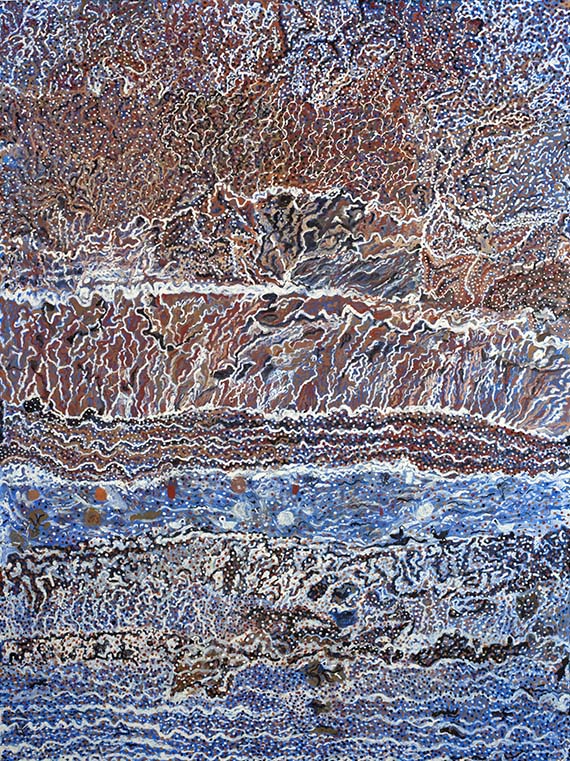
In contrast to Ngallametta, the work of emerging artist, Monica Rohan (b. 1990) suffuses historical European aesthetics with a contemporary inquiry into autobiography. Here, whimsy and dexterity work in sync to explore different emotional and physical states of being. Rohan’s facility for oil paint leaves the wefts and weaves of the fabric – which I see as a landscape of sorts – rich and vibrant on the surface, a surface where lies the influence of a European tradition of painting.
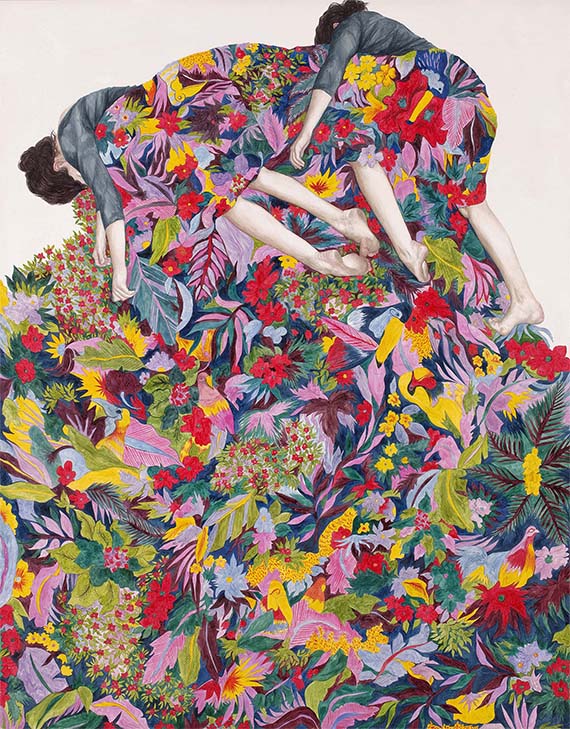
In this show, it is clear to anyone that the medium of painting is as alive and innovative as ever: old themes are explored anew, new techniques are displayed, and everyday notions are immortalized on canvas.
Let’s move away from the historically loaded act of painting and examine an artwork of the expanded field:
Spiral is part of an overarching project explored throughout the work of Ross Manning (b. 1978). A long coil of dowel oscillates in a spiral, powered by a ceiling fan. Kinetic energy brings life to an otherwise mundane object. Manning’s years living in Tokyo as an English teacher proved very influential: it was there in the dense electronic forests, where every surface is electrified with light and movement, that Manning began his early experiments with electronics. For me, the work also speaks to Ngallametta’s work, and to Rohan’s: its sinuous, energized rope moves, gyrates like the peripatetic brushwork present in Wutan #2; it announces its relationship with Rohan’s fabric folds through its own activated materiality.
Like the characters in Malouf’s Babylon, the work in the ‘Goma Q’ exhibition assumes its own relationship to the land in which it is made: it draws from a context that is at once dissimilar and the very same – whether up north in the tropics or the hinterland of the South East. It is art made by citizens of a new cosmopolitanism, a Babylon for now.
Elliott Nimmo is an artist based in Sydney, Australia. He has just completed a Master of Fine Art at the National Art School in Sydney, where his work focused on the appropriation of fashion and advertising imagery.
